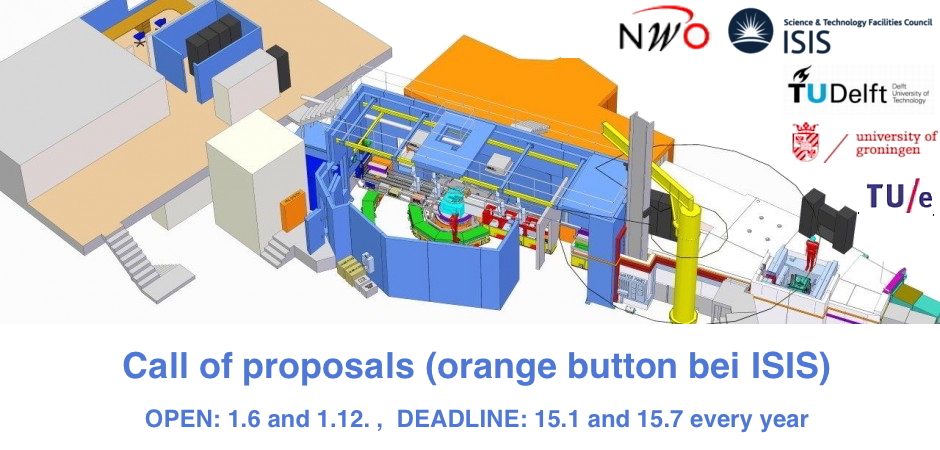
In some cases multiferroics can exhibit structural inhomogeneity in the form of domains with subtly different
structures. For example, when the prototypical spin-spiral multiferroic TbMnO3 is doped on the Tb-site by a few percent of Ca, the ferroelectricity is gradually suppressed via an intermediate state that resembles a relaxor ferroelectric. It is thought that so-called polar nanoregions (PNR) are formed in a non-ferroelectric matrix, the difference in structures of the two regions being too small to resolve using standard diffraction methods.
The higher resolution of Larmor diffraction should allow the structure of the PNR to be distinguished from that of the bulk. Two distinct phases would be observed if the PNR are coherent over “large” length scales, and a wider distribution of lattice parameters would be observed if the PNR are on the nanometre scale, associated with the strain arising from a high density of domain walls. Similar phenomena are present in other magnetic materials. For example, in the alkali metal superoxide RbO1.72 an orbital ordering transition occurs on cooling and domains with both antiferromagnetic and ferromagnetic ordering appear to coexist. The magnetic exchange is most likely determined by the type of orbital ordering, which in turn seems to be highly dependent on the cooling rate; domains with different types of orbital ordering or different oxygen contents should be manifested by differences in structure. The air sensitivity of these samples precludes investigation by microscopy techniques, but Larmor diffraction would enable the domain structure to be probed as a function of cooling rate in an inert atmosphere. In all cases where there is structural inhomogeneity and domain structures on the nanoscale, the SANS and SESANS modes of LARMOR will provide complementary information by probing the structure on the 1 nm – 1 µm length scale.
Most of this experimental work will be done and co-ordinated by the Zernicke Institute for Advanced Materials.


